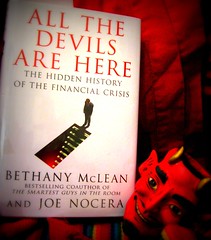securitization, also identified as structured finance is a financing technique that permits capital markets to support the pooling of sources direct income and sell them to investors. In nations where the legislation would encourage structured finance, virtually all income-making assets can be securitized.
In the United States, securing financing can be done for almost almost everything, like health-related and hospital records, oil exploration, settlement procedures of trial in projects across the enterprise, royalties to music, or even a baseball stadium. But often the most securitized assets, globally and in the United States are customer loans, particularly residence mortgages. The corporate structure of the U.S. mortgage securitization has created into a complicated network of relationships among the a variety of enterprise units that supply wide range of loans and investment services. In the United States, there are two simple property mortgage marketplace securities: a public (or at least quasi-public) and the other private. In basic, most residence mortgages marketplace operates by one particular of the two government sponsored enterprises (GSEs) created by Congress.
These Fannie Mae and Freddie Mac acquire mortgages businesses that meet strict underwriting recommendations with respect to private mortgage lenders. The status of Fannie Mae and Freddie Mac is a little vague, due to the fact Congress has not passed a law that explicitly guarantees the payment of bonds or securities issued by the GSEs. However economic markets typically think about these two businesses as TBTF and remedy of debt practically assured by the U.S. government, saying that Congress will not permit these businesses to collapse.
Fannie Mae and Freddie Mac to hold some mortgages in their own portfolios, securities, but many other people, they share investment instruments and sold to investors.
A huge amount of loans securitized by Fannie and Freddie give businesses economies of scale and the benefits of risk diversification that most private companies can not match. In addition. Due to the implicit federal guarantee of Fannie and Freddie, GSE can discover investors for their securities, increasing transaction expenses of credit rating agencies or credit enhancements.In addition, GSE hesitate to provide the highest loan-to-value (LTV) loans and are reluctant to purchase loans to borrowers with a history of questionable credit. Loans sold to these sources of public funds are typically 5 or 30 years mortgage, often fixed interest and no penalty for early repayment. Fannie Mae and Freddie Mac will not buy loans from private breeders mortgages, unless they use standardized contracts that include terms generally regarded as fair to both parties. The two GSEs have strict automated underwriting standards and generally accepted monetary models need standardized documents, and pay the exact same price tag for all the loans they obtain.
This is why, in basic, Fannie and Freddie acts as a stabilizing force in the prime mortgage industry, protects against and eliminate predatory lending situations or underwriting risk. Some commentators also argue that mortgage pools GSE “merge decrease and moderate some borrowers with the same loan pricing danger, which also supplies modest help for some borrowers to moderate danger. Mortgages packaged by Fannie Mae and Freddie Mac are in a great position rather by current difficulties in the mortgage market in the United States.






